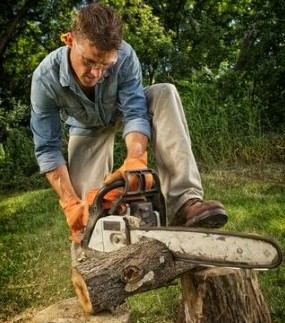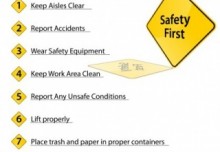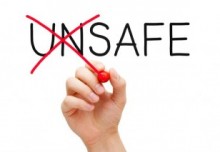Why Pay for Safety?
Spending the extra time and money to prevent injury is invaluable. Here is an example outlining how much less expensive prevention is.
My friend was cutting wood with a new chain saw. Everything was progressing well, he had a sharp chain and plenty of wood to cut. My friend was wearing safety gear, what you would think of as obvious personal protective equipment (PPE) for this task, safety glasses, ear plugs and steel toed shoes. When he was finished cutting he moved the saw as he had done hundreds of times before, and unfortunately the saw made contact with his upper thigh. You may have guessed, the chain was still moving. Fortunately, between the insulated coveralls, jeans and key fob for his truck, there was no injury. A near miss.
After talking with my friend, this is not the first time this had happened. He has other jeans that bear the jagged rip of the chain saw. Why didn’t he learn the first time? What was he thinking?
The first time the chainsaw ripped his clothes he looked into Kevlar chaps to protect his legs. The Kevlar chaps were $100. More than he wanted to pay. So, you may have guessed this one too… NO chaps!!
Why is it that when it comes to accident or injury prevention, we are reluctant to pay up front? We are reluctant to invest dollars for our safety. If my friend had actually cut his leg, he would have paid a lot more than $100, and he would have been wishing he had bought the protective chaps. We all know how well wishing works in those cases. If you believe you don’t have the funds or you think the money could be better spent somewhere else, I urge you to take a few minutes and re-evaluate those thoughts. The funds could not be better spent from a hospital bed. The funds could not be better spent without a limb, vision or hearing. Proper prevention and safety measures help protect us. I will also add that a pair of jeans $30, a pair of insulated coveralls $50 and vehicle key fob $250 – need I say more…?
Some people are willing to take risks and gamble that “it won’t happen to me”. Once a hazard assessment has been made, it is in your best interest to follow all of the resulting recommendations for safety and expand upon protecting yourself and others from hazards at every opportunity. You never want to depend on work compensation or insurance to cover you. Work Compensation and insurance does not cover pain, inconvenience, guilt, lost productivity, loss of mobility, and so on.
Prevention is the route to take. It is an easy concept to understand, however it is near impossible to know what the return on investment amount would be for the investment in accident prevention. Hopefully this example will help you see investments in hazard prevention, whether seemingly large or small, are worth it to infinity!
Please “Leave a reply” below and share your near miss stories and ideas for opportunities for hazard prevention.














